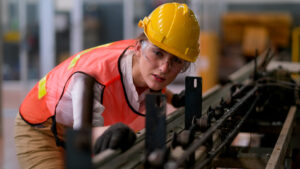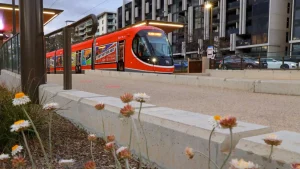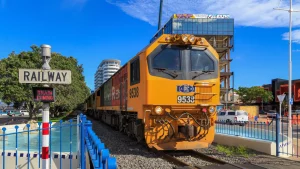Network Rail’s Strategic Business Plan for their seventh Control Period (CP7 2024-9) is a comprehensive 171-page document packed with information and objectives. Not least of these is a £44bn expenditure commitment. As providers of Driver Advisory Systems (DAS), TTG is interested in the challenges around traction energy to the industry and the emerging Internet of Trains where a connected eco-system of trains, trackside technology, and control systems calibrate to unlock real-time communication.
What stood out is a variance table between CP6 and CP7 showing a 54% increase in the cost of traction energy amounting to over £4bn in the coming five years. Whether it is cost passed on by Network Rail or expenditure to the rail operating companies, it is a significant sum tied up in the railway.
Back in the day, when TTG introduced the world’s first DAS on a Hull Trains Class 180, we were primarily focused on a 4-11% savings profile from diesel consumption. Our algorithms were coded in collaboration with academics from the University of South Australia, and we continue to work with them in a formal partnership to this day.
Fast-forward 15 years and the UK has 20,000 miles of electrified track which is about 38% of the whole network. While reduced or optimised energy consumption based on right-time running remains paramount, as we move into CP7 we are looking at a much more complex picture.
For traction itself, there is an evolving scenario as to when, where, and how much energy is drawn from which power source on any given journey.
Overall electricity consumption will substantially increase
Regardless of the party in power, government will maintain the 2050 Net Zero Strategy which prioritises the movement of people by rail instead of cars. This push is likely to be stronger if the electric vehicle market doesn’t grow as fast as expected because of supply chain challenges, the price of vehicles, or the lack of charging infrastructure.
The digital railway programme will continue to roll-out across the network meaning that the ‘fixed-block’ system, in use for 200 years, gives way to ‘moving-block’. Deploying ECTS active signalling technology allows for more trains on the same track as they can run closer together at their highest speeds whilst still maintaining safe braking distances.
Using electricity will become more complex
Updated rolling stock specifications means traction sources are set to change soon. Diesel engine packs will ultimately come out of Bi-Mode stock and be replaced with traction lithium-ion batteries. Hydrogen will also be part of the conversation. Where train services cover both electrified and non-electrified lines, diesel packs will likely still be needed.
Having electrified and non-electrified sections is likely to cause hotspots on the wires where pantographs systematically connect in a frequent space, weakening key sections faster than others. Then there is the question of variable ‘energy draw’ and degradation, as some areas may have insufficient peak time power to supply all the rolling stock calling on the power source. This has implications for general train performance especially when meeting tight schedules with increased capacity.
There may also be interventions from Government, intentional or otherwise. Driving the Net Zero agenda could place pressure on battery technology before it is ready to sustain trains running longer distances on batteries alone. Conversely, we might rely upon diesel longer than necessary as an easier option to maintain an efficient running railway even if it isn’t quite as green as expected. In any event, it is a situation in flux for a railway expected to undertake around two billion journeys each year.
The Internet of Trains is an opportunity and a risk
Real time connectivity, especially train and train-to-train, offers significant opportunities to manage increases in capacity and train services performance. If we always know where a train is, an intervention in train operation can take place in real time. TTG’s recent work with Resonate has proven this to be possible – another world first that we look forward to sharing with you very soon. At scale, this has profound opportunities for smoothing traffic flow through the UK’s 16 critical junctions. Time, after all, is money and no train driver wants to wait in queues without broad visibility as to why.
With connectivity comes risk, including less time to correct or revise instructions and a new safety management requirement. Can continuity of service be maintained if something goes wrong? There will also be sections of the network where some trains cannot be pin-pointed due to topography, location, and the inordinate number of tunnels that no organisation is prepared to quantify.
What is our contribution to the railway?
TTG has been working in UK rail for 25+ years and we’ve seen Driver Advisory Systems evolve to meet changing circumstances. There are open considerations as to whether ‘advisory’ should begin to be ‘mandatory’ with all the implications that brings. There remains, also, the importance of train drivers and the need to enhance and enrich their working experience and not diminish or distract.
However, it is the challenge of energy that captures the industry’s imagination – its consumption, the continuity of supply, and its source including the wires, battery, hydrogen, diesel, and any combination thereof. At TTG we look forward to working on ways to gather significant additional data in this area.
It is also the challenge of connectivity and the Internet of Trains that is exciting, and we are proud of our recent breakthroughs with Resonate and other partners on the railway to prove this is possible. We look forward to actively harnessing the power of real-time connectivity.
Want to continue the conversation? You can contact our team directly on our website.



